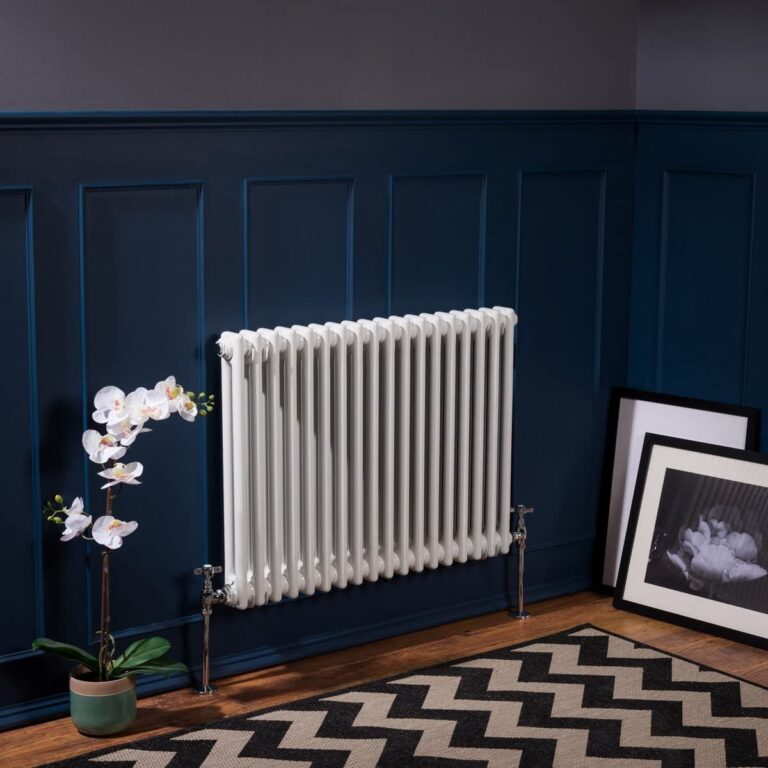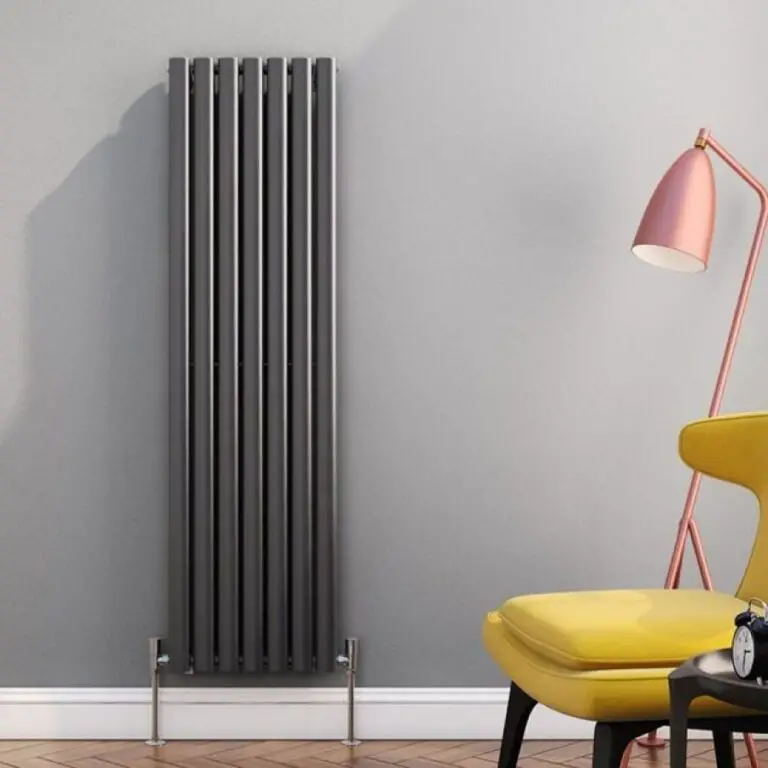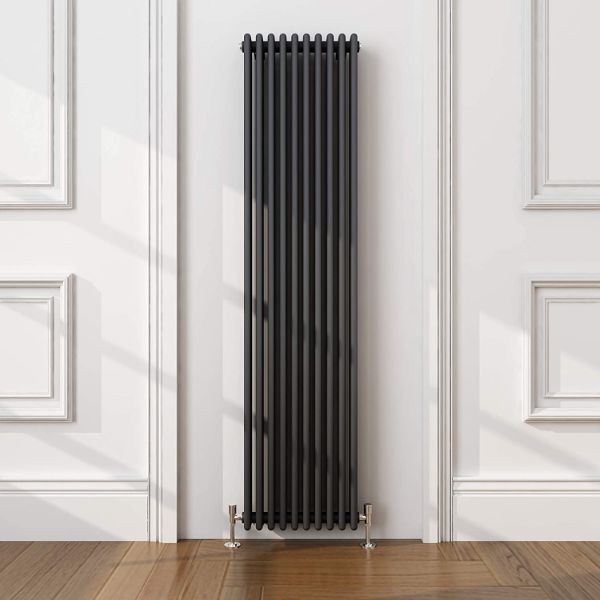Installing a radiator can seem intimidating, but it doesn’t have to be. With the right knowledge and preparation, you can do it yourself without help from a plumber.
From knowing what type of radiator you need to understanding the plumbing and safety considerations, this guide will teach you how to plumb a radiator and how to hang it like a pro. Let’s get started.
How easy is it?
Installing a radiator is not complicated—if you follow instructions carefully and take your time. Depending on the type of radiator, installation may require additional steps, such as connecting it to the plumbing system or making sure that it is properly secured to the wall.
For example, learning how to fit a radiator to existing pipes requires a different process to plumbing an entirely new radiator. But overall, installing a radiator is actually quite straightforward. The most important thing is that you know what kind of radiator you need before starting any work.
How long does it take?
The amount of time it takes to install a radiator depends on several factors, such as whether you need to alter the radiator pipework.
Generally speaking, expect it to take at least two hours for an inexperienced person and significantly less time for someone who has done this kind of work before. This includes setting up the necessary tools and materials as well as completing all necessary steps in order to ensure that your new radiator is safely installed.
Step 1: Dressing the radiator
Before you can install the new radiator, first, you need to apply PTFE tape to the tail of both radiator valves – wrapping it around 17 times clockwise. Remove any gunk and dirt inside the valve, and make sure the tape is secure. This is called ‘dressing’ the radiator.
Step 2: Attach the air vents
Once your radiator is dressed and ready to go, you can begin screwing in the air vents. Fasten them tightly without damaging the O-ring.
This step helps to prevent pressure buildup, which can damage parts of your system over time if left unchecked.
Step 3: Connect the radiator valve tails
Connecting your radiator valve tails is an important step in ensuring the proper installation of your new radiator. The tails are the connectors between the radiator and the valves – they control the flow of water through your radiator.
Fit the tails with an adjustable spanner, winding them in until there is only one thread showing. Again, don’t screw them in too tightly, or you risk damaging your new radiator.
Step 4: Measure the width of your wall
Now it’s time to start fixing the radiator to the wall.
It’s important to measure both width and height when installing a new radiator so that you have an accurate idea of how much space you have available for installation purposes. Measure twice or even three times just to be safe – accuracy is key here!
Step 5: Measure + mark your centre line
Once you know how much space is available, mark out a centre line where you plan to install the new radiator. This will be a reference point when it comes time to install brackets later down the line.
Step 6: Find the centre of the brackets
Now that you have marked out a centre line, it’s time to find the centre of each bracket that will support your new radiator (if using wall brackets). To do this, lay the radiator flat on its back and measure the centre between the right and left brackets.
Step 6: Measure the height of your radiator
Keep the radiator on its back, and measure from the top of the top bracket to the top of the bottom bracket.
Step 7: Measure the height of your bottom brackets
Next, take your measuring tape from the floor to the centre of the valve outlet to measure the height of your bottom brackets. Make sure the tape is straight with no bends to get an accurate reading.
Step 8: Measure between the brackets
Now you have a centre point on the wall; you need to measure the distance between that centre point and the left and right brackets. Keep your radiator lying flat for this – it’s much easier that way!
Step 9: Mark bracket positions
Once you have all the measurements for your radiator and brackets, it’s time to mark the top and bottom bracket positions on the wall. Use a pencil in case you make a mistake and need to redo this.
Step 10: Drill and plug the wall
Next up, you need a hammer drill with a 7mm masonry bit to drill into the wall. Match your plugs up with the holes you’ve just drilled into the wall, and hammer them in – careful not to cause any cracks in the wall.
Step 11: Screw the brackets
We’re almost there! Screw in the brackets where you’ve just plugged the wall, and use a level checker to make sure they’re straight.
Step 12: Hang the radiator
Hang your radiator onto the brackets you’ve just installed and tighten the connectors to the valves with a wrench. Make sure they are secure and tight.
Step 13: Top up with corrosion inhibitor
Your radiator is finally on the wall – now it’s time for some finishing touches. Ensure the header tank is topped up with corrosion inhibitor and open both valves by the number of turns it took to close them off.
Step 14: Bleed the radiator
Turn off the heating, and using the radiator bleed key, turn the valve at the top of the radiator until you hear a hissing sound of the air escaping. Retighten the valve when the sound stops and liquid comes out. Turn the heating back on and check the pressure gauge on your boiler. Look for any leaks on your radiator, and make sure it’s heating up nicely.
Congratulations, you successfully installed a radiator!
FAQ’s
What tools do I need to install a radiator?
Installing a radiator requires several basic tools that you likely already have in your toolbox. You’ll need adjustable wrenches for loosening pipes, flathead screwdrivers for securing pipes, pliers for gripping nuts, and an electric drill with the right size bit for drilling holes in your wall. Depending on your setup, you may also need a hacksaw or pipe cutters to adjust pipe lengths.
Can I remove and replace a radiator myself?
Yes! It might seem daunting at first, but installing a new radiator is actually quite simple once you break it down into steps. Always make sure that all plumbing connections are tight and secure before refilling your system with water. Air locks can occur if they are not properly sealed, which could cause leaks and damage to your home.
In conclusion…
Installing a new radiator isn’t as hard as it seems – with enough preparation and research, anyone can do it. Remember that safety should always be your top priority when working with any type of heating system or appliance – so take your time, read all instructions carefully, and be sure to use proper safety gear at all times.






